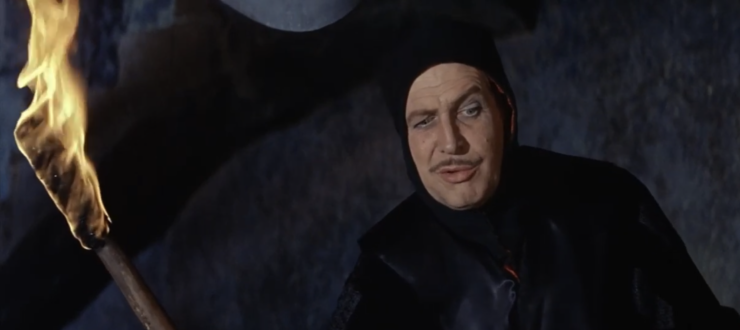After four years, Saw returns to the big screen this week with Spiral: From the Book of Saw. Although the franchise doesn’t quite command the same excitement that it did during its 2000s heyday, when moviegoers flocked to cinemas every October to watch the new entry, it remains to be seen whether audiences are anxious to see what stars Chris Rock and Samuel L. Jackson can bring to the famously low-budget series.
Although fans certainly love Saw movies for their gory death traps and their soap-opera plotting, the franchise’s true greatest asset is its primary villain, John Kramer, the Jigsaw killer. Played by Tobin Bell with an intensity that belies his sleepy features, Kramer is a consummate evil genius. A brilliant engineer who learns to cherish life only after his cancer diagnosis (or a failed suicide attempt, or the death of his unborn child, or his divorce… the story changes a lot), Kramer tortures those he considers ungrateful in order to force them to appreciate their lives. Before the victims participate in his deadly traps, Kramer first subjects them to moralizing monologues, in which he explains why he has chosen the victim and how the torture will help them.
As much as the series’ detractors dismiss the Saw franchise as ushering in the era of torture porn, arguably the nadir of horror cinema, its roots go back to one of the true titans of the genre: Vincent Price.
In a career that stretched from 1938 to 1995, Price captivated audiences with a debonair manner that brought smooth sophistication to his evil ways. Although he certainly played heroic, and even romantic roles at times, Price excelled as an evil genius. His elegant presence and rich voice brought a new and impressive level of menace to the devilish tortures his characters devised.
If we look at Price’s six best villain performances, we can find plenty of moments that surely inspired the character of Jigsaw and set the standard for horror movie geniuses of every stripe…
House of Wax (1951)
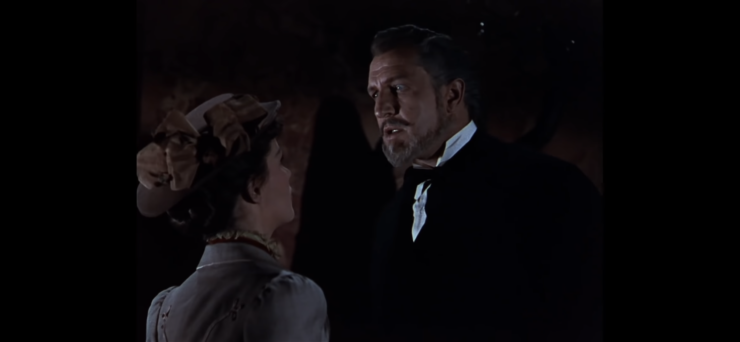
Although he had been working in film for over a decade, Price cemented his position as a horror icon with this 1951 3D spectacle, directed by Andre DeToth. Price stars as Professor Henry Jarrod, a skilled wax sculptor who was badly scarred after his unscrupulous partner Burke set fire to the museum in an insurance scam. With the help of his assistant Igor (a young Charles Bronson!), Jarrod goes on a murder spree, rebuilding his figures from the bodies of his victims.
Not only did House of Wax launch Price on a new career path as a villain, but it also set the tone for many of his best works to follow. A potent mix of melodrama and spectacular violence, the film gives Price a grand stage on which he can enact his fiendish plans. Blending a thirst for revenge with a moral calling (here, a love of beauty), Price excels at playing a killer who sees himself as above the hoi polloi. Also, the film establishes a surprising trend of Price playing mask-wearing characters who have big reveals in the third act.
Moment of Inspiration: House of Wax is fairly light on explicit gore, relying instead on the viewer to fill in the gaps. That approach is most effective when an audience listens to Jarrod lecture on his latest figures, unaware that they are in fact wax-covered corpses.
House on Haunted Hill (1959)
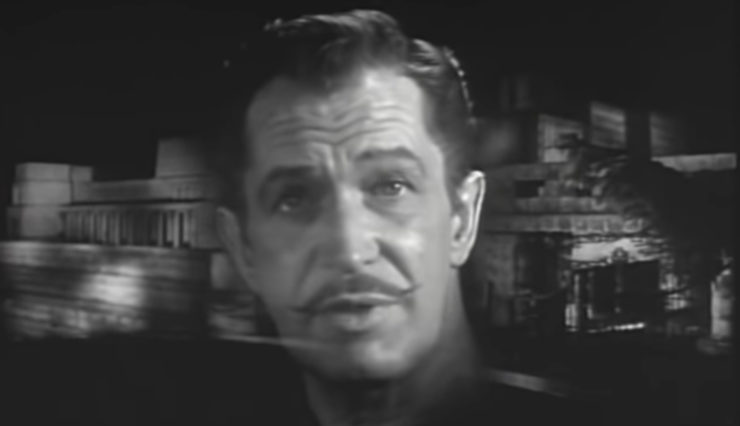
Both fans and detractors of the Saw series can generally agree that Bell’s performance as Jigsaw raises the quality of the otherwise base proceedings. The same could be said of Price’s role in the films of William Castle, the filmmaker behind gimmick-driven movies like 13 Ghosts and The Tingler. But the most popular Castle film remains House on Haunted Hill, and with good reason. With a bare bones plot about a mad millionaire (Price) offering five people $10,000 to stay inside a haunted house for 24 hours, House operates like a cinematic funhouse ride, serving up scare after scare.
Without the sympathetic backstory given to many of his villain characters, Price plays the obscenely rich Frederick Loren as a kind of master of ceremonies, trading barbs with wife Annabelle (Carol Ohmart) while taunted his future victims. Freed from all sense of humanity and morality, Price devours the screen, making his sinister smile the movie’s most chilling effect.
Moment of Inspiration: After letting Annabelle believe that she has killed him, Frederick devises a trap in which a skeleton rises from a vat of acid to accuse her. The skeleton, controlled by Frederick, then shoves Annabelle into the vat, cementing his victory.
The Pit and the Pendulum (1961)
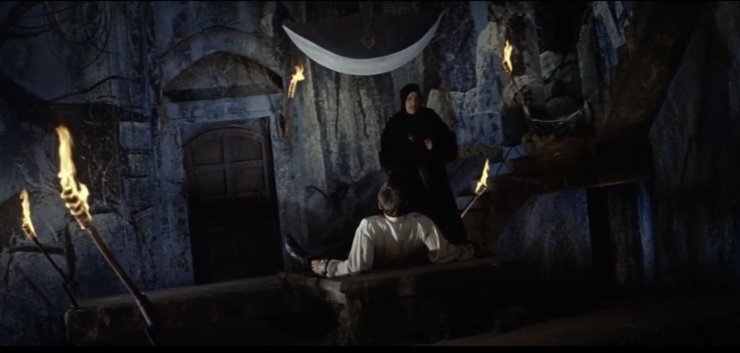
After making a few Castle films, Price started working on classier fare for another schlockmeister, Roger Corman. Castle filmed eight Edgar Allan Poe adaptations for American International Pictures, starting with 1959’s The Fall of the House of Usher. Price proved to be a particularly good fit in these pictures, with his regal performances serving the films’ gothic atmosphere.
That’s particularly true of their second Poe film, in which Price plays the troubled Nicholas Medina. Traumatized by his father’s cruel treatment of his mother, Nicholas believes that his wife Elizabeth (Barbara Steele) has been driven mad and killed herself in an iron maiden. But when Elizabeth’s brother Francis (John Kerr) investigates, we discover that she still lives, and is involved in a plot to push Nicholas toward insanity, so she can leave with her lover Dr. Leon (Antony Carbone). The deceit and backstabbing build toward a truly bleak ending involving the titular instruments of torture.
Written by genre stalwart Richard Mattheson, The Pit and the Pendulum is all overheated madness and twisty intrigue, which suits Price just fine. Whether playing the broken and whimpering Nicholas or his cruel father, Price meets the movie on its own over-the-top terms.
Moment of Inspiration: Saw V opens with a character tied to a slab while a razor pendulum swings above him. You can’t get much more direct than that.
The Masque of the Red Death (1964)
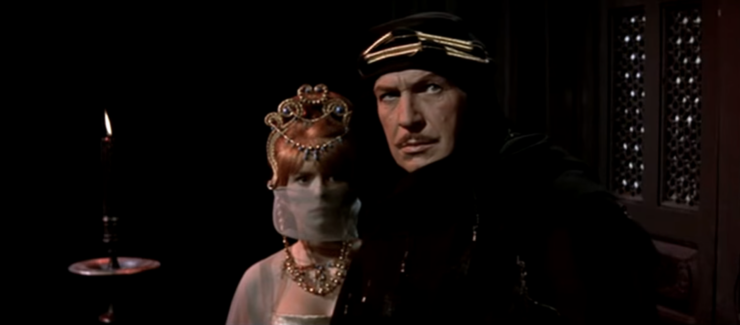
Without question, the greatest Price and Corman collaboration is The Masque of the Red Death, written by Charles Beaumont and R. Wright Campbell. With gorgeous cinematography by future directing great Nicolas Roeg, The Masque of the Red Death is a searing, surreal cinematic achievement, anchored by Price’s terrifying performance as the utterly remorseless Prince Prospero. A powerful ruler whose castle overlooks a small Italian town, Prospero revels in the power he holds over the locals. That power compels him to take captive the young Francesca (Jane Asher) and submit her to a series of mental games, all in service of Satan. When a plague grips the village, Prospero holes up in his castle with his courtiers, certain that his pact with the devil will keep him safe and reveling in the power he holds over others.
Like Frederick of Haunted Hill, Prospero has no morals. But there is nothing fun or cheesy about this character, even if Price himself is clearly having a good time. Instead, his utter cruelty and endless boasting compel us to hate him, and Price feeds off of our hatred. The film builds to a deeply satisfying conclusion—one that memorably involves Price in blood-red makeup.
Moment of Inspiration: During a party, Prospero orders the nobles in his court to debase themselves by acting like pigs and worms. Nobody is physically harmed, but the scene demonstrates Prospero’s warped love of mental games, a quality he shares with John Kramer.
Witchfinder General (1968)
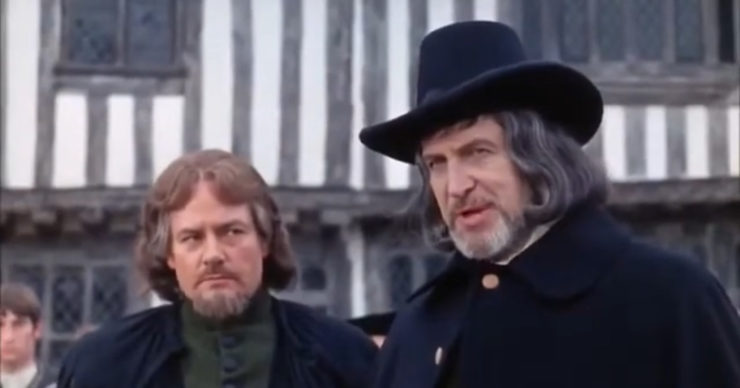
Many fans consider Prince Prospero to be Price’s most evil character. But Prospero has nothing on Matthew Hopkins, the titular heartless opportunist who justifies his evil by insisting that he does God’s work. In place of the psychedelia and camp that mark most of Price’s horror films, director Michael Reeves and cinematographer John Coquillion make Witchfinder General a sober affair, one that focuses on human suffering. The film opens and closes with women wailing from the torture inflicted by Hopkins and his minions.
Set in the 17th century during the English Civil War, Witchfinder General stars Ian Ogilvy as Richard Marshall, a Roundhead soldier in love with peasant girl Sara (Hilary Dwyer). When Hopkins investigates her uncle (Rupert Davies) for witchcraft, Sara is raped by his associate and her uncle is murdered, setting Richard on a quest for revenge.
Unlike so many Price characters, there’s no wry smile to Matthew Hopkins, no bit of droll silliness to allow the viewer an escape from the terrible happenings on screen. In the film’s single most disturbing moment, Hopkins watches stone-faced as a woman burns alive, utterly unmoved by her screams or her husband’s tears. The movie showcases a level of subtlety rarely seen in Price’s villainous roles.
Moment of Inspiration: Hopkins certainly oversees plenty of torture in Witchfinder General, including stabbing, drowning, and immolating his victims. But the most terrifying part is the utter moral surety he maintains while performing his awful deeds, something John Kramer will later emulate in the tapes he leaves for his victims.
The Abominable Doctor Phibes (1971)

Perhaps the clearest inspiration for Jigsaw comes from this movie, directed by Robert Fuest. Price plays the titular doctor, thought to have been killed in a car accident on the way to visit his dying wife in the hospital. When the wife’s doctors and nurses (nine in all) fail to save her, Phibes lays low and starts plotting his revenge. Scarred and forced to talk through a device connected to his voice box, Phibes begins to murder his enemies using methods based on the Biblical plagues of Egypt.
Despite that macabre plot, Dr. Phibes often operates as a bleak comedy, with plenty of dark, stiff-upper-lip British humor. On his mission to capture Phibes, Inspector Trout (Peter Jeffery) encounters various absurd characters, responding to all with good ol’ English reserve. That low-key attitude plays against the film’s gorgeous technicolor visuals and odd flourishes, including a mechanical band who plays in Phibes’ lair.
Moment of Inspiration: In the final sequence, Phibes straps the son of the chief surgeon (Joseph Cotton) to an operating table, rigs a container full of acid to fall on the boy in exactly six minutes (the amount of time Phibes’ wife lived on the table) and forces the surgeon to surgically extract the key—embedded near the boy’s heart—that will undo the locks and free him.
***
So, have I covered all of your favorite villainous roles from the great Vincent Price? Are there other classic horror characters and films that have influenced the Saw franchise and similar recent films? Let us know in the comments below!
Joe George’s writing regularly appears at Bloody Disgusting and Think Christian. He collects his work at joewriteswords.com and tweets nonsense from @jageorgeii.










